New Zealand’s Specialist Project Lawyers
There is a marked difference
in the way Greenwood Roche operates. From the outset we have focused on clearly defined specialist areas, retaining highly respected legal experts in each field. We then take that further; ensuring clients have direct and regular access to the most senior partners and lawyers, in a cost efficient manner.
Close contact with experts and clear cost advantages
We advise on a range of significant public and private sector projects. To ensure our specialists are always where they’re needed, we operate as one office with hubs in Auckland, Wellington & Christchurch.

Recent Projects
Projects
Foundation Village – Pearson Residences – Fast Track Consent Granted
The Greenwood Roche resource management team, led by Partner Francelle Lupis, has assisted Generus...

Recent Projects
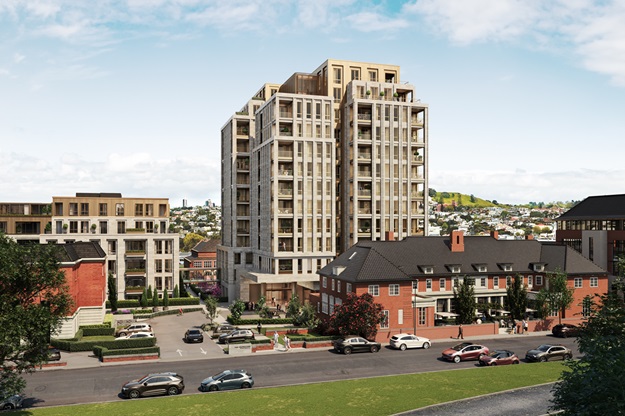
Foundation Village – Pearson Residences – Fast Track Consent Granted
The Greenwood Roche resource management team, led by Partner Francelle Lupis, has assisted Generus Living Group to obtain fast-track consent under the COVID-19 Recovery (Fast-track Consenting) Act 2020 for the construction of the 13-storey Pearson Residences building in Parnell, Auckland.
The Pearson Residences building is the third and final stage of The Foundation, a $500 million retirement village in central Auckland, designed by Peddlethorp architects and officially opened by the Prime Minister in March this year.
Pearson Residences is located in the centre of the Foundation precinct, surrounded by Foundation Building 1 and Building 2, Birthcare, Pearson House, ACG Parnell College, the Jubilee Hall and Foundation on George Street building. The resource consent authorises the construction of the 48m central building, containing 65 retirement units and care facilities, a range of resident amenities, two levels of basement carparking, landscaping and a pedestrian airbridge connecting to Building 2.
Specialist expertise
Key lawyers involved
Close window
New Tiwai Electricity Contracts
Brigid McArthur and Vimal Nair have recently completed for Rio Tinto and New Zealand Aluminium...
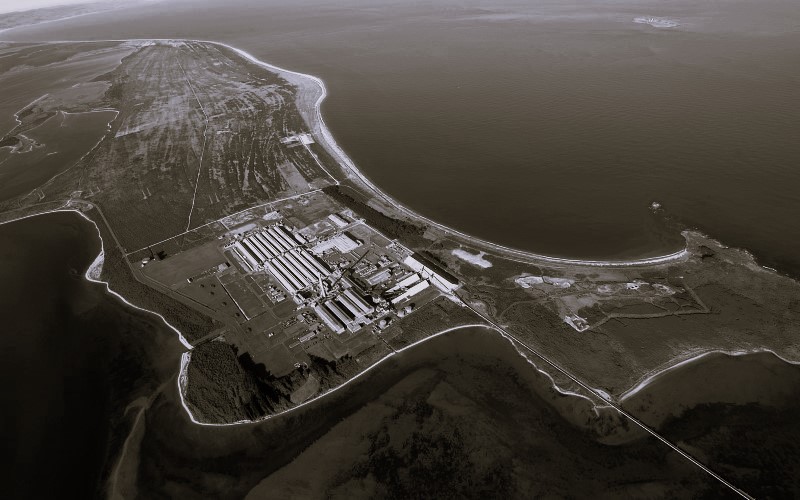
Recent Projects
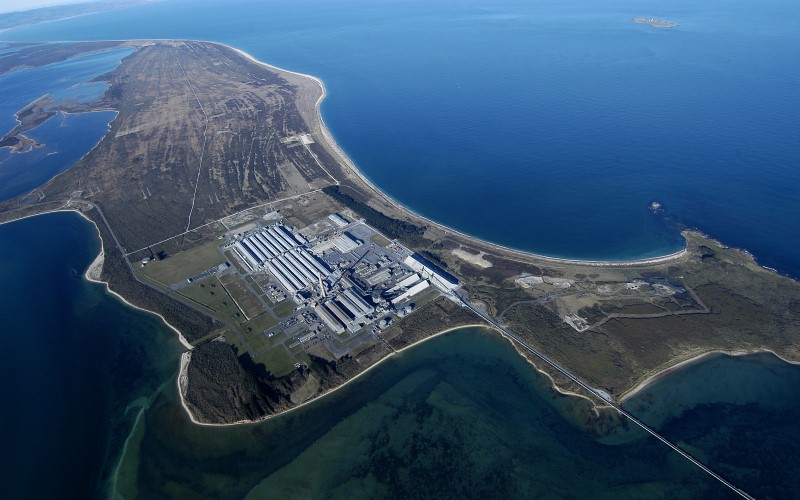
New Tiwai Electricity Contracts
Brigid McArthur and Vimal Nair have recently completed for Rio Tinto and New Zealand Aluminium Smelters a suite of new 20-year electricity contracts, including ground-breaking demand response contracts.
The new deal ensures the Tiwai Point aluminium smelter remains open after years of uncertainty around its future, a massive relief for employees, Southland and Tiwai’s many stakeholders.
This uncertainty has long unsettled NZ energy markets and deterred investment in new renewable generation.
The overall deal replaces NZAS’ previous Electricity Agreement with Meridian Energy, a long‑term contract for differences providing NZAS with hedge cover for up to 572 MW.
Under the new arrangements, hedge cover for up to 572 MW in aggregate is provided by three different generators (Meridian Energy, Contact Energy and Mercury NZ) through a portfolio of different CfDs. The challenge was to ensure the rights and obligations, risks and operational management of the different contracts work alongside each other seamlessly, having regard to the separation between them.
NZAS is the country’s single largest electricity consumer, taking around 13% of NZ’s electricity supply. The new deal also includes separate contracts with Meridian and Contact that enable them to call on NZAS for various different tranches of demand response. In effect, NZAS can be required to dial back production when there is a shortage of power in the grid. The smelter therefore acts as a battery for the NZ electricity system, ensuring the lights are kept on when NZ needs it most.
Specialist expertise
Key lawyers involved
Close window
New Dunedin Hospital – Stage 4 Ancillary Services Facilities – Fast Track Consent Granted
On 22 July 2024 resource consents and a notice of requirement were granted / approved under the...

Recent Projects
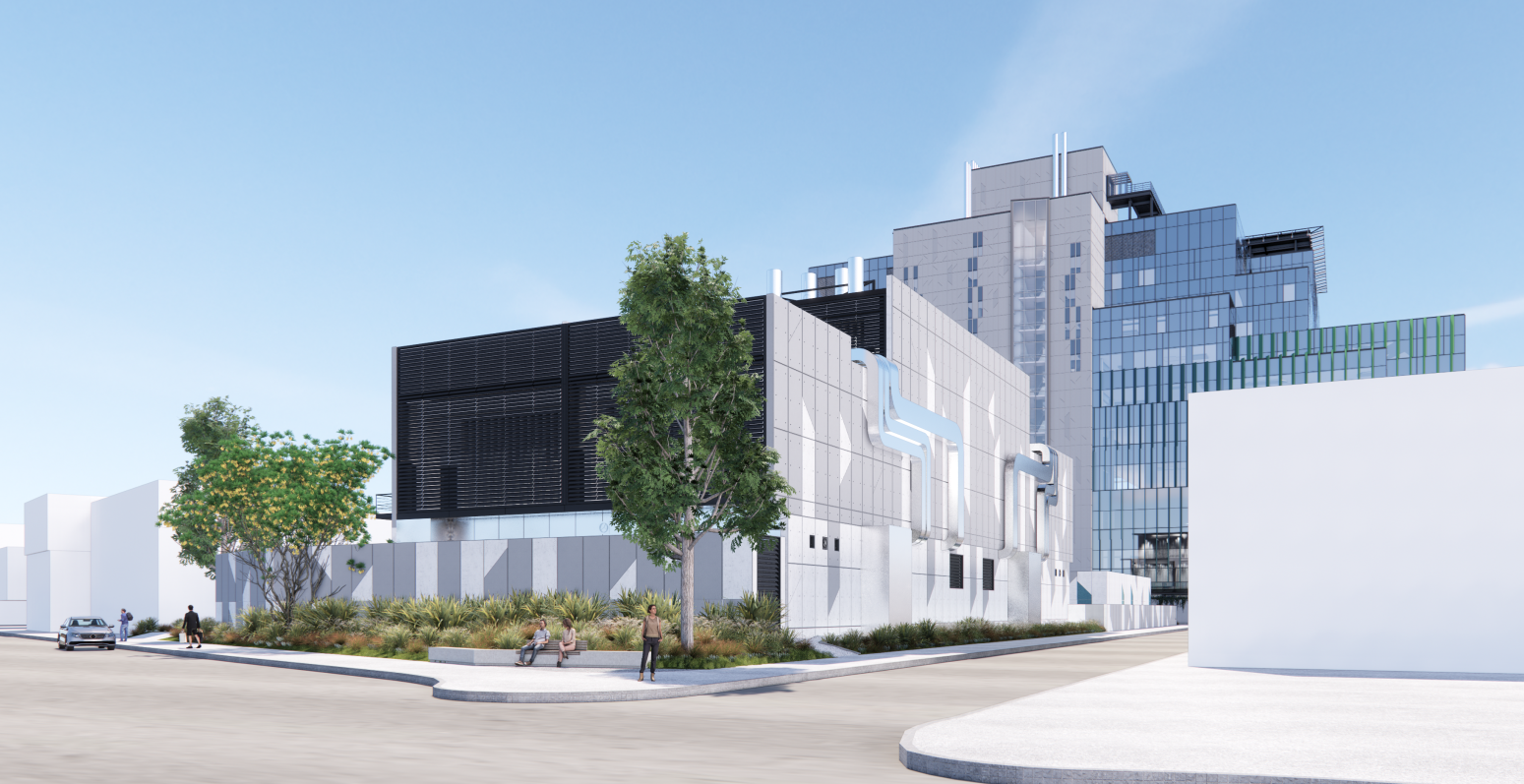
New Dunedin Hospital – Stage 4 Ancillary Services Facilities – Fast Track Consent Granted
On 22 July 2024 resource consents and a notice of requirement were granted / approved under the COVID-19 Recovery (Fast-track Consenting) Act 2020 authorising the construction of the ancillary services facilities that will support the operation of the New Dunedin Hospital - Whakatuputupu.
Resource consent was granted for the stage 1 foundation works on 23 December 2021, for the stage 2 Outpatient building on 17 August 2022 and for the stage 3 Inpatient building on 24 November 2023. This fourth and final stage of the consenting process will authorise the construction and operation of supplementary, ancillary services facilities necessary for the operation of the two main clinical buildings – the Inpatient and Outpatient buildings.
The facilities will comprise a generator building, a heat pump/chiller enclosure, a services gantry extending over Castle Street and connecting to the Inpatient building, and associated equipment including two diesel storage tanks. They are to be located on the “Bow Lane” block to the east across Castle Street from the main facilities which are located on the “Cadbury” and “Wilson” blocks. Construction works are set to begin on the facilities within the coming months.
A team from Greenwood Roche led by Rachel Murdoch and Francelle Lupis are advising Te Whatu Ora on all consenting matters relating to the New Dunedin Hospital.
Specialist expertise
Key lawyers involved
Close window
New Zealand Rural Land Company Limited – Restructure and sale of property portfolio
Greenwood Roche recently acted for New Zealand Rural Land Company Limited (NZRLC) in relation to a...

Recent Projects

New Zealand Rural Land Company Limited – Restructure and sale of property portfolio
Greenwood Roche recently acted for New Zealand Rural Land Company Limited (NZRLC) in relation to a restructure of its property portfolio.
The project involved transferring 14,487 hectares of rural land, predominantly dairy and forestry, and all interests and property rights held in relation to those properties, from NZRLC’s subsidiary, NZRLC Dairy Holdings Limited, to a new limited partnership, New Zealand Rural Land Investments Limited Partnership.
The transfer to New Zealand Rural Land Investments Limited Partnership was to facilitate NZRLC selling a 25% equity interest in its land portfolio to Roc Partners (an Australian specialist private markets investment manager) for NZ$44.2m. Greenwood Roche also successfully acted for NZRLC on the property and finance aspects of the sale to Roc Partners.
The Greenwood Roche team was led by Jeannie Warnock (Partner), Anthony Staples (Partner), Kurt McRedmond (Senior Associate), Tom Petersen (Lawyer) and Georgie Pay (Lawyer) with specialist input from other lawyers within the firm.
Specialist expertise
Key lawyers involved
Close window
New Dunedin Hospital – Stage 3 Inpatient Building – Fast Track Consent Granted
On 24 November 2023 resource consent was granted under the COVID-19 Recovery (Fast-track Consenting)...
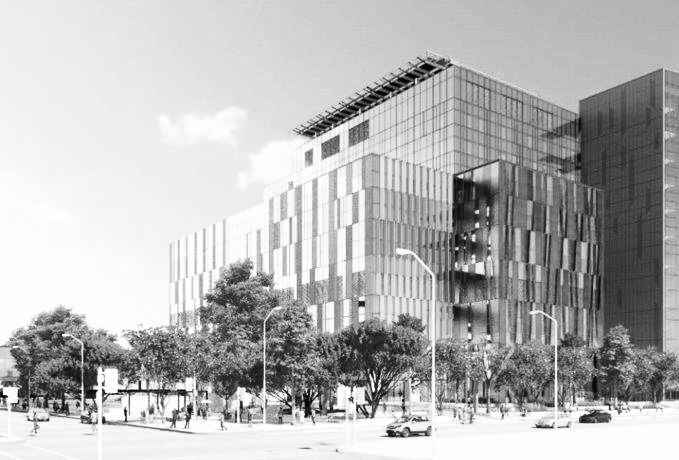
Recent Projects
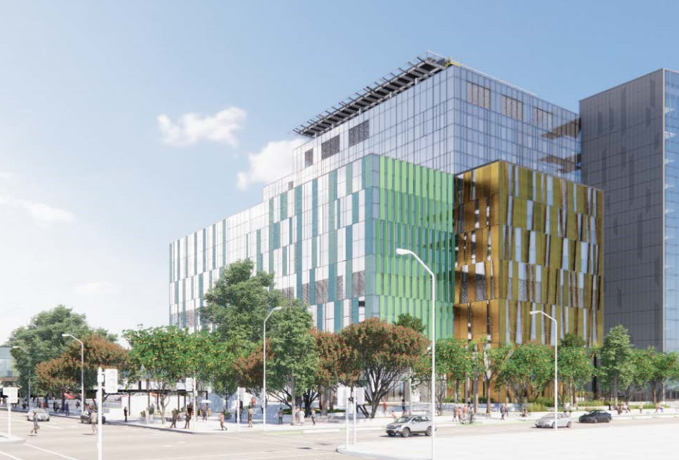
New Dunedin Hospital – Stage 3 Inpatient Building – Fast Track Consent Granted
On 24 November 2023 resource consent was granted under the COVID-19 Recovery (Fast-track Consenting) Act 2020 for the above-ground construction works and subsequent operation of the new Inpatient building at Dunedin Hospital.
Resource consent was granted for the stage 1 foundation works on 23 December 2021 and for the stage 2 Outpatient building on 17 August 2022. The granting of this subsequent consent will enable the establishment of the new Inpatient building, the largest of the clinical buildings comprising the new Dunedin Hospital.
As the primary tertiary healthcare facility for the Southern region, the new Inpatient building will house a range of consultation and treatment spaces, including an intensive care unit, a dedicated primary birthing unit and an expanded emergency department. In addition to the dedicated clinical facilities, the Inpatient building site will also accommodate generous areas of landscaping and public realm extending primarily along the Cumberland Street frontage of the site. Works on the Inpatient building are anticipated to commence in Q1 2024.
A team from Greenwood Roche, led by Julian Smith, Monique Thomas and Rachel Murdoch, are advising Te Whatu Ora on all consenting and property matters relating to the New Dunedin Hospital.
Specialist expertise
Key lawyers involved
Close window
Faringdon Oval – Fast-track Consent Granted
On 26 July 2023 an expert consenting panel granted Hughes Developments Limited’s Faringdon Oval...
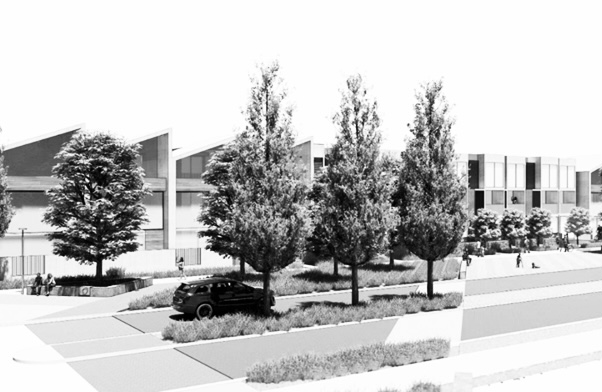
Recent Projects
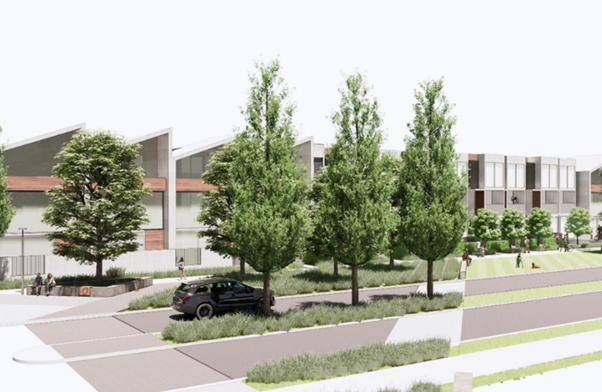
Faringdon Oval – Fast-track Consent Granted
On 26 July 2023 an expert consenting panel granted Hughes Developments Limited’s Faringdon Oval application under the COVID-19 Recovery (Fast-track Consenting) Act 2020.
Faringdon Oval is a 69.3ha extension of the existing, well established Faringdon community in Rolleston, which has developed over the last decade under the Operative Selwyn District Plan, the Housing Accords and Special Housing Areas Act 2013, and more recently, the COVID-19 Recovery (Fast Track Consenting) Act 2020.
The Fast Track consent for Faringdon Oval authorises the subdivision, land use and associated activities needed to facilitate the addition of 684 residential units to the Rolleston housing supply with an additional 462 residential units to be enabled through super lots with minimum density requirements. The development will support a range of residential housing types and densities, high quality landscaping, open space reserves, a neighbourhood centre and a network of transport links to existing residential areas and the Rolleston town centre.
Greenwood Roche is delighted to have assisted HDL in delivering a development that will contribute significant housing supply in such a strategic location for the wider Canterbury region.
Specialist expertise
Key lawyers involved
Close window
New Dunedin Hospital – Stage 1 Enabling Works – Variation Granted
On 28 July 2023 the Dunedin City Council granted a variation to the conditions of the previously...
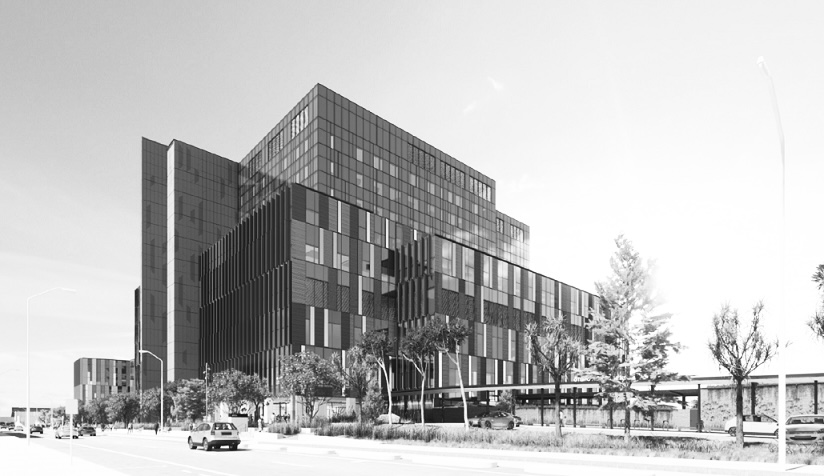
Recent Projects
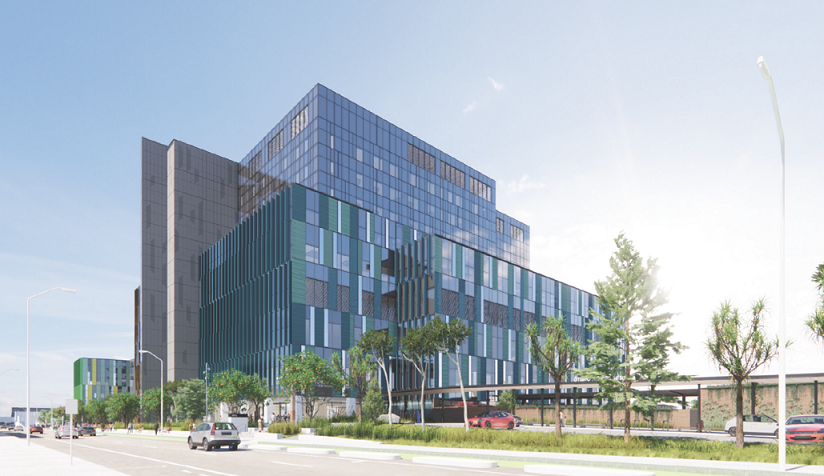
New Dunedin Hospital – Stage 1 Enabling Works – Variation Granted
On 28 July 2023 the Dunedin City Council granted a variation to the conditions of the previously consented enabling works for the New Dunedin Hospital.
The variation provides for changes in the location and footprint of the proposed Inpatient Building which will be housed on the old Cadbury factory site. The variation also accommodates a new plant building between the Inpatient Building and the southern site boundary, and technical construction related changes such as updated pile designs and driving methodology for the Inpatient Building and its two link bridges.
Enabling works for the Outpatient Building are complete and above-ground construction has begun with a target ‘go-live’ date of 2025. Enabling works are underway for the significantly larger Inpatient Building which is scheduled to ‘go-live’ in 2029. The resource consent application to authorise the above-ground construction and operation of the Inpatient Building has now been lodged with the Environmental Protection Authority for referral to an expert consenting panel under the COVID-19 Recovery (Fast-track Consenting) Act 2020. Subject to securing all necessary approvals, construction of that Building is scheduled to begin in Q1 2024.
The Greenwood Roche team has been advising Te Whatu Ora on the resource management and property aspects of the New Dunedin Hospital project since 2017.
Specialist expertise
Key lawyers involved
Close window
PC 59 (Private) – Albany 10 Precinct
Greenwood Roche recently acted for Bei Group Limited on Plan Change 59: Albany 10 Precinct to the...
Recent Projects
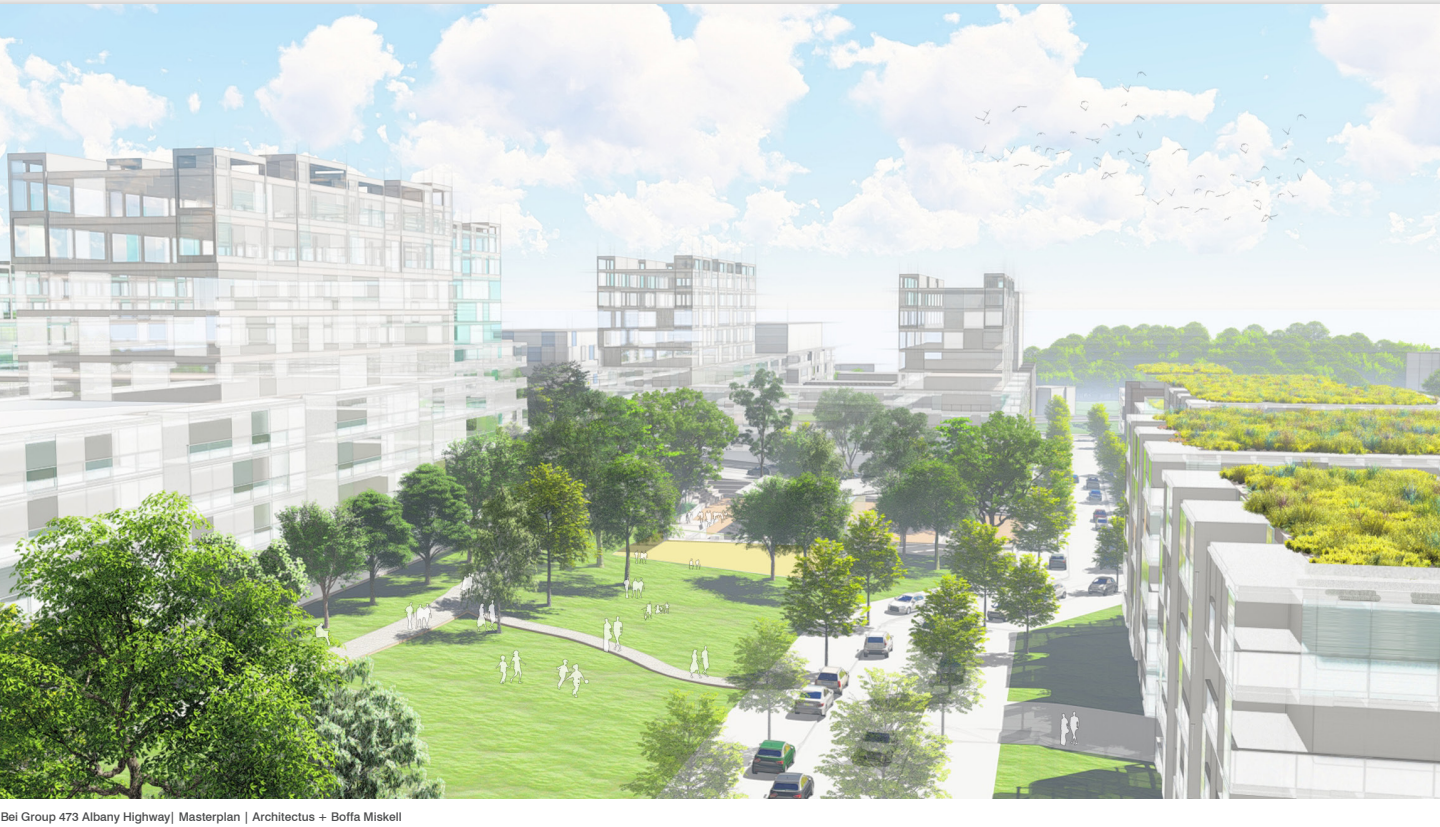
PC 59 (Private) – Albany 10 Precinct
Greenwood Roche recently acted for Bei Group Limited on Plan Change 59: Albany 10 Precinct to the Auckland Unitary Plan (Operative in Part), securing appropriate zoning and plan provisions to develop a comprehensive residential development, which will enable 1,800 dwellings in buildings up to ten storeys on part of the old Massey Campus, near the Albany town centre.
We advised Bei Group through the initial application, including notification and hearing phases and, following approval of the plan change, an appeal by Kristin School to the Environment Court largely in respect of transport matters. Concurrently, Greenwood Roche provided advice on conflicts between Auckland Council’s Plan Change 78 (Intensification Planning Instruments required by the National Policy Statement Urban Development) and proposed Variation 3 to the Auckland Unitary Plan. Ultimately Variation 3 was withdrawn by the Council and the appeal was resolved. On 9 December 2022, Auckland Council’s planning committee approved the operative status of the Plan Change, with formal notification to follow in early 2023.
Bei Group Limited can now progress its vision for its 13.7ha site at 473 Albany Highway - to create a vibrant, diverse and high-quality residential neighbourhood, with a range of housing typologies that will be supported by a new internal street network, quality public open space and a commercial hub to service resident demand. Greenwood Roche is delighted with this outcome and is looking forward to watching this exemplar development come to life.
Specialist expertise
Key lawyers involved
Close window
See more projects

News & Insights
Insights
Residential Development Underwrite
The Ministry of Housing and Urban Development (MHUD) has recently announced a time-limited...

News & Insights

Residential Development Underwrite
The Ministry of Housing and Urban Development (MHUD) has recently announced a time-limited underwrite initiative aimed at stimulating residential construction activity during the economic recovery.
The Residential Development Underwrite (RDU) is targeted towards developments which:
- can deliver significant housing supply to the market;
- are situated in locations in most need of such supply (i.e. the main urban centres); and
- present a low risk/cost for the Crown.
For successful applicants, the RDU involves the Crown committing to buy a specified number of houses within a residential development for which the developer cannot secure pre-sales, at an agreed discount to the market price. The RDU will, arguably, enable developers to achieve the funding pre-conditions set by their lenders, boosting supply to the market in the next 6 to 12 months.
MHUD is now inviting applications for the RDU. The applicant must:
- be an established residential developer with a proven track record of successfully building and selling houses of a similar size and scale;
- have ownership or use of the land (or an option to do so);
- have all necessary resource consents for the development;
- be able to prove that the underwrite is needed for the development to proceed within 6 to 12 months of the application (for example, reasonable attempts to market the development have been made, finance approval is conditional on securing pre-sales and the developer has procured the contractors for the development); and
- be able to provide a recent market valuation for the development/houses from a registered valuer.
In addition, the development must have a minimum of 30 houses or, if the development is staged, the relevant stage must have a minimum of 30 houses.
Priority will be given to developments which can deliver the most houses (in locations that most need them) for the least risk and cost to the Crown. This means MHUD will favour those developments situated in the main centres (primarily Auckland, Hamilton, Tauranga, Christchurch and Dunedin), which have a lower number of houses needing pre-sales underwritten, and a lower underwrite price. Developments which need 100% of pre-sales underwritten will not be accepted. While most developments are likely to be located in the main centres, developments in other locations may be considered where such developments meet the criteria.
There is no price cap on the sale of houses within a development, meaning the RDU is not limited to providing an underwrite for affordable housing only.
Applications will be generally assessed against the following assessment framework:
Risk and net cost to the Crown 35%
Project readiness 25%
Volume and nature of supply 20%
Location 20%
More details in relation to the assessment framework for RDU and the application process can be found on the Ministry of Housing and Urban Development website*. Applications opened on 7 October 2024 and, while MHUD has specifically indicated that the availability of the RDU is time-limited, no final closing date for applications has yet been specified. MHUD has been clear that applications are not being assessed on a “first come, first served” basis and are encouraging applicants to take the time necessary to prepare high quality applications.
*Click on the wording Ministry of Housing and Urban Development website in the article above to follow the link.
Download as a PDF
Close window
Building consent system overhaul – Government sets its sights on building consenting authorities
In a recent slew of announcements, the Government has unveiled transformative reforms aimed at...
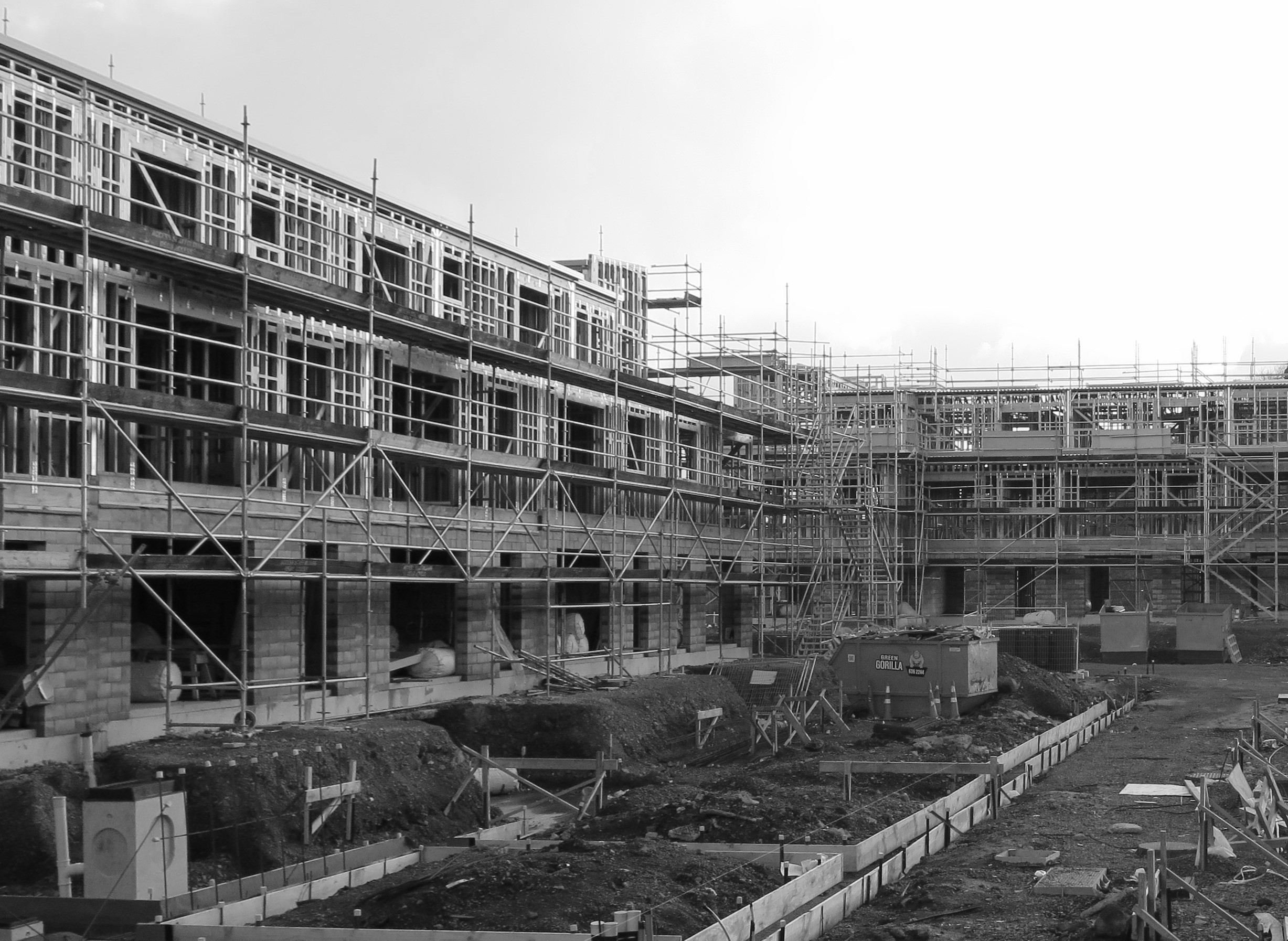
News & Insights
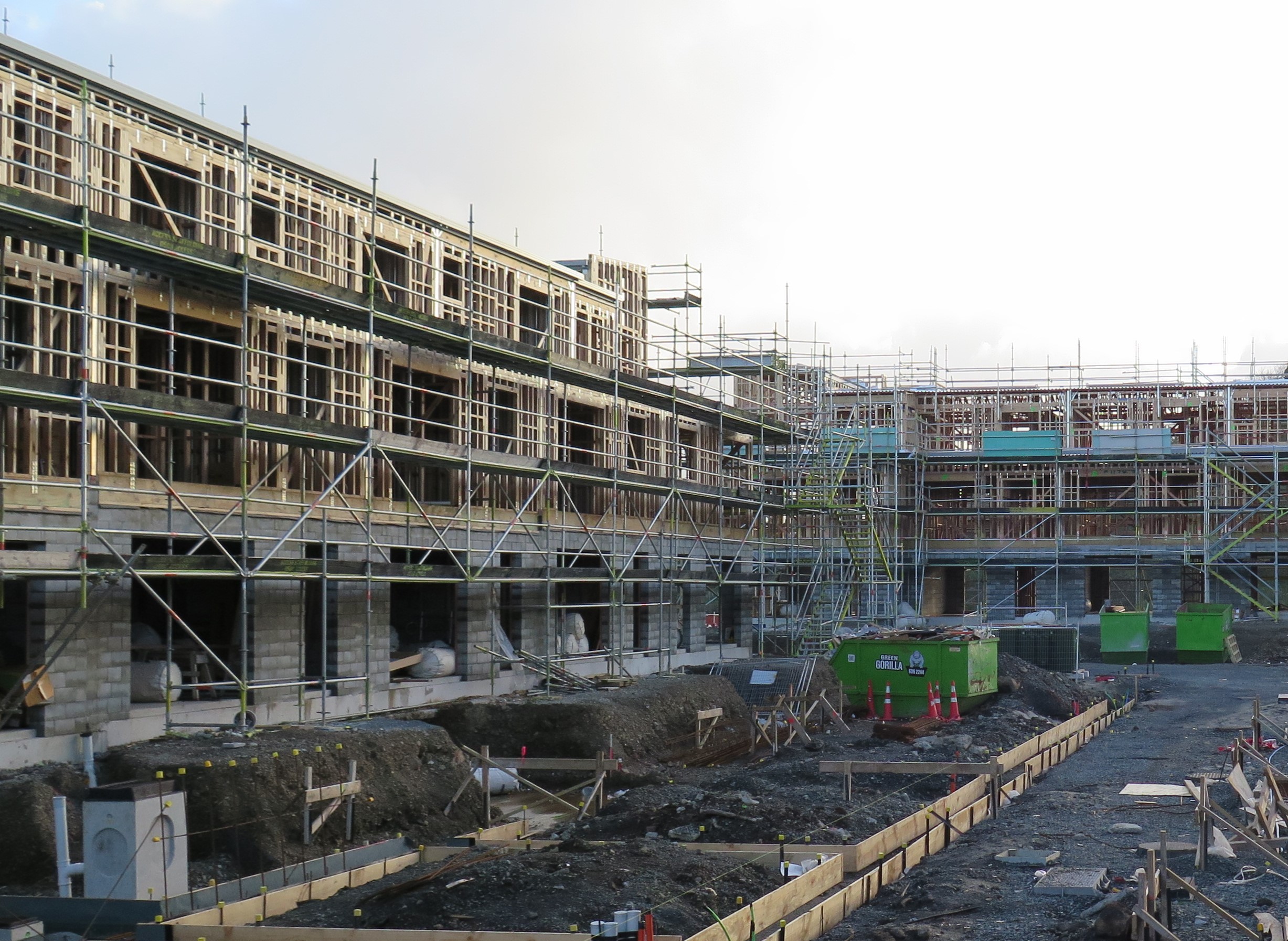
Building consent system overhaul – Government sets its sights on building consenting authorities
In a recent slew of announcements, the Government has unveiled transformative reforms aimed at streamlining the building consent system and boosting efficiency in New Zealand’s struggling building sector.
On 29 September 2024, the Minister for Building and Construction, Chris Penk, announced that the Government is beginning to investigate options for a major reform to building consenting.
The Government considers this reform necessary to combat increasing building costs and productivity concerns, and incentivise sector growth and development. There are also concerns over inconsistent practices and building code interpretations across the 67 building consenting authorities (BCAs), a barrier to standardisation of design, construction techniques and build quality.
Proposal for building consent authority reform
In what would be the most significant shake-up of the building consent system since the 1991 reforms, the Government is exploring three key changes:
- Voluntary consolidation Councils will be able to group together to deliver building control functions more effectively. A number of councils already pool some resources but barriers exist to full integration. This approach focuses on removing those barriers.
- Regional BCAs By replacing the current 67 district and city council BCAs with a smaller number of regional BCAs, the Government aims to improve consistency, through entities with the critical mass to also drive economies of scale.
- Single point of contact An entity will be established to receive consent applications, but building inspections will be contracted out to existing BCAs or private consenting providers, encouraging competition and specialisation.
When asked by Newstalk ZB about the timing of possible legislation, the Minister said:
Whether we are going along the lines of allowing councils that already want to band together and have done some work along those lines … that would be relatively short, that would be as early as the start of next year… but if you were going to more of a single point of contact across the country, potentially setting up a new entity for doing that, then maybe its going to be a bit longer, either way we want to move really quickly, we’ve been having conservations all year about it, it’s not like this is the start line, we are quite well advanced, even though we are saying now formally we want to engage and get some thoughts on those particular three options we’ve narrowed down to.
Arguably, the most significant part of Minister Penk’s announcement is that the Government is also reviewing liability settings, with an opportunity to reconsider the liability of BCAs and the duties of care owned by BCAs under the new regime. If these changes were to gain traction, they have the potential to bar claims against BCAs (as is already the case in some other jurisdictions) or limit such claims. The ability to bring claims against BCAs for negligence in relation to building consent activities has become part of the New Zealand legal and construction landscape over the past few decades, with regular actions being brought against BCAs. Legislative intervention to protect BCAs from claims in negligence represents a “watch this space” event for the whole construction sector.
In the Minister’s opinion, the risk of negligence claims has led to BCAs taking a conservative and risk-averse approach, negatively impacting productivity, increasing construction costs and delaying project consenting and completion. He states that the Government’s overarching ambition is to move towards a more enabling, risk-based and proportionate approach to consenting.
Immediate changes (minor variations)
On 1 October 2024, the Minister announced immediate changes to the Building Regulations to clarify the definition of a “minor variation” and introduce a definition of “minor customisation”. These changes are part of a move to enable small changes (such as the substitution of products) to be made to building plans without the need to apply for a building consent amendment, introducing greater flexibility for architects, builders and owners.
Public consultation
This was followed on 2 October 2024, by the Government’s release of its public discussion document, setting out wider proposals to reduce delays in the building inspection process. Previously signalled in July, the document centres around plans to increase the use of remote inspections to make the building and consenting process more efficient and affordable. The implementation of remote inspections by default seeks to improve productivity by reducing the need for inspectors to travel, in turn allowing more inspections to take place in a day, and resources to be shared across regions, improving access, efficiency and consistency.
Public consultation is now open and will run until 29 November 2024. BCAs, homeowners and other construction stakeholders are encouraged to offer feedback on options which include:
- requiring BCAs to use remote inspections as the default approach;
- requiring BCAs to have the systems and capability to conduct remote inspections;
- non-regulatory initiatives to lift inspection productivity; and
- creating a new offence to deter deceptive behaviour during a remote inspection and give BCAs more confidence to inspect remotely.
This overhaul takes place in the context of the Government’s broader reforms to the building sector, including such as promoting competition in the building supplies industry through the introduction of the Building (Overseas Building Products, Standards, and Certification Schemes) Amendment Bill, on which the Transport and Infrastructure Committee is currently receiving public submissions until 14 November 2024.
Get in touch
Reform of this scale is rare and the implications will be wide-reaching. Greenwood Roche will be following these developments closely, supporting our clients to submit on and navigate the changes. Reach out to one of our team below for advice on how these changes could impact your projects. Clicking on their name below will take you through to their profile on our website where you will find their contact details.
Barry Walker, Amy Rutherford, James Riddoch, Rob Harris, Vimal Nair, Geoff White, Jordan Ropati, Tanya Young
Go to https://www.mbie.govt.nz/have-your-say/consultation-on-increasing-the-use-of-remote-inspections-in-the-building-consent-process for the discussion document.
Download as a PDF
Close window
Buyer Beware: Court of Appeal ruling reinforces purchaser responsibility in seismic report dispute
The Court of Appeal has recently overturned a decision of the High Court concerning the extent to...

News & Insights
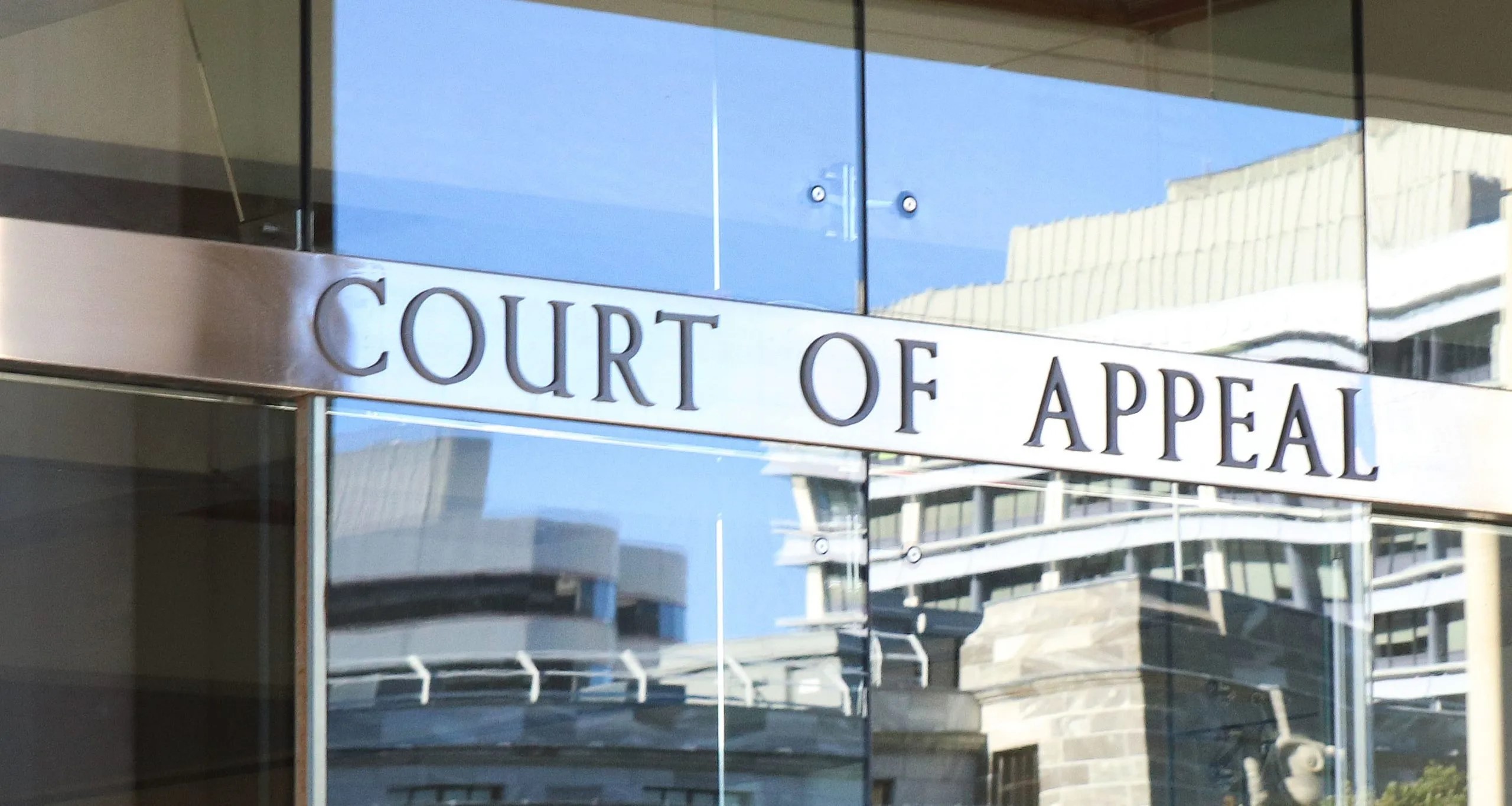
Buyer Beware: Court of Appeal ruling reinforces purchaser responsibility in seismic report dispute
The Court of Appeal has recently overturned a decision of the High Court concerning the extent to which a purchaser can rely on representations regarding the NBS rating of a commercial building contained in an Initial Seismic Assessment, in circumstances where those representations turn out to be incorrect. While the High Court found that the representations in that case amounted to a misrepresentation under section 35 of the Contract and Commercial Act 2017, the Court of Appeal disagreed with that decision, restoring the principle of buyer beware in relation to seismic matters in sale and purchase transactions.
- In 2023, the High Court heard a case concerning a dispute over the extent to which a purchaser can rely on an expert third party report supplied by a vendor in relation to the property for sale (Tadd Management v Weine). In this case, the report provided was an initial seismic assessment (ISA) of a commercial building, which stated the NBS rating for the building was 60 percent. Following settlement, the purchaser obtained two detailed seismic assessments (DSA) for the building which assessed the NBS for the building as 30 percent and 10 percent, respectively. The purchaser sued the vendor for it losses (being its costs incurred in seismically strengthening the building), claiming it was induced to enter into the transaction as a result of contractual misrepresentation or, in the alternative, common mistake, as to the NBS for the building.
- The High Court sided with the purchaser, stating that the ISA (together with covering letter and marketing information in relation to the ISA) provided were representations as to fact (not opinion), were incorrect, and were relied upon by the vendor, thereby meeting the threshold for misrepresentation under section 35 of the Contract and Commercial Law Act 2017 (Act). The High Court also held, for similar reasons, that the grounds for common mistake under the Act were also made out.
- The case highlighted the risk to vendors in supplying information to prospective purchasers in relation to the seismic performance of buildings, and in particular, initial or desktop assessments. It also undermined, in relation to ISAs (and despite the cautionary wording in the ISA itself suggesting that the assessment might not be accurate), the principle of “buyer beware” and purchaser due diligence.
- In a recent decision, the Court of Appeal has overturned the High Court’s decision in Tadd. The Court of Appeal agreed that ISAs, as expert reports, are, by their nature, not merely expressions of opinion, but rather will contain statements of fact. The Court of Appeal disagreed that the representations in the ISA in this case amounted to misrepresentation, because:
- the relevant statement of fact in the ISA was not that the building had an NBS rating of 60 percent but that the author of the report had assessed the building’s NBS rating to be 60 percent by applying the correct methodology in an honest and reasonable way; and
- therefore, the different NBS ratings in the subsequent DSAs did not mean that the representations in ISA amounted to a misrepresentation of fact.
- therefore, the different NBS ratings in the subsequent DSAs did not mean that the representations in ISA amounted to a misrepresentation of fact.
- The Court of Appeal drew comparisons between ISAs which have been honestly and reasonably prepared using the correct methodology (but the findings of which turn out not be entirely correct) with valuation reports or legal opinions - also honestly and reasonably prepared but which have anticipated outcomes that are not ultimately borne out. Provided the report/opinion is prepared with the proper skill, care and diligence that would normally be expected of a competent professional), the representations made within them cannot amount to misrepresentations or mistakes.
- The Court of Appeal’s decision reinstates the principle of buyer beware in relation to ISAs, thereby smoothing over the contractual uncertainty created by the High Court decision. While the outcome in Tadd may seem severe on the purchaser (who ultimately has paid a purchase price which did not reflect the building’s true value having regard to the actual NBS), and given the barriers (both time and cost) to the obtaining this type of information in a competitive sale or tender process, it may be that the market now responds in a way to afford protections to purchasers against this sort of outcome in the future: vendors may now have no choice but to provide detailed seismic assessments of buildings to prospective purchasers, in order to avoid material discounts to the purchase price on account of the uncertainty to purchasers arising from initial or desktop assessments.
- Against the Court of Appeal’s decision, vendors (and their agents) should continue to be cautious in the provision of ISAs and DSAs, including by:
- avoiding making subjective representations about, or drawing conclusions from, the information in such assessments; and
- including provisions in sale contracts which prevent a purchaser from relying on the information in any expert reports provided.
If you would like to know more about this case or require advice in connection with the sale of a commercial building, please contact Kelly Johnson or Mark Anderson from our property and real estate team.
Download as a PDF
Close window
Beware Poorly Developed Renewable Energy Projects
In this article we explain some of the key aspects to check as potential purchasers of renewable...
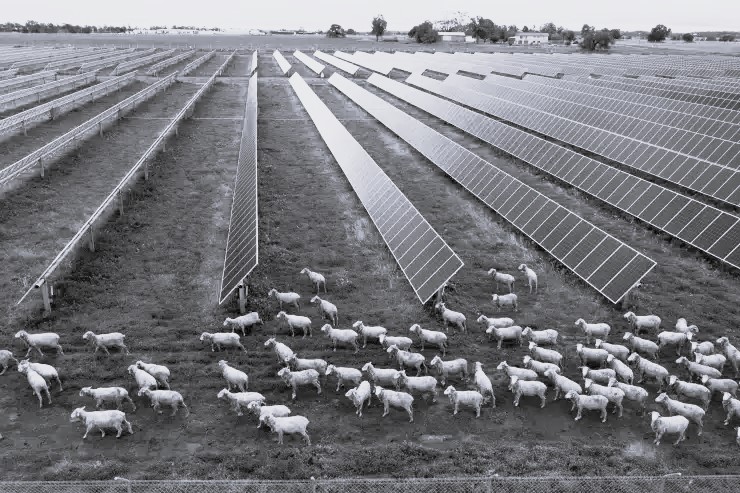
News & Insights
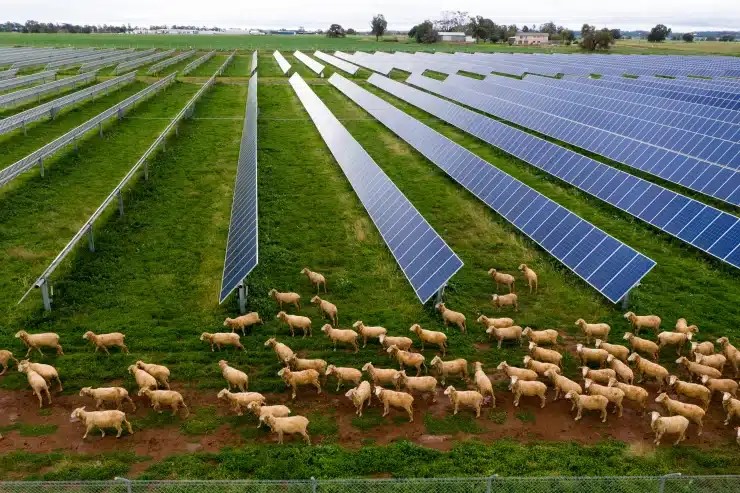
Beware Poorly Developed Renewable Energy Projects
In this article we explain some of the key aspects to check as potential purchasers of renewable energy projects – particularly solar farms – are lured with “ready to build” developments.
Numerous small (and often reasonably recently formed) entities are touting for sale interests in renewable energy farms in New Zealand, particularly solar farms, some with battery storage. Their targets are mainly overseas developers with deep pockets and little familiarity with New Zealand laws or energy markets.
Our experience in acting for purchasers on several of these reveals differing levels of readiness in projects described as secured, consented and otherwise ready to build.
Aspects to check in particular are:
- Did the seller itself obtain all necessary consents to hold, or have an option, over the interest in the relevant rural land? Did it obtain Overseas Investment Act consent from the Overseas Investment Office and has it complied with the conditions of that consent?
- What sort of interest in land has been secured? If only an easement or a licence, is it in fact really a lease for OIO purposes? Check what consents you require under the Overseas Investment Act to acquire your project interest, and how likely you are to meet the consent tests. How will you deal with the farmland advertising requirement?
- Does the project hold all required resource consents or fast-track approvals?
- Are the consents over the right piece of land, and are the conditions sufficiently wide to allow the relevant earthmoving, traffic, construction and operating activities?
- Is the project grid consented? There are differing levels of formality in national grid or distribution network consents, and a mere letter agreeing to undertake grid studies or provision of a template connection agreement does not mean the project is grid consented. There is a very long queue of renewable energy projects awaiting grid connection from Transpower or network connection from the local lines company. The process is detailed, expensive and takes time.
- At what stage are any PPA (power purchase agreement or offtake agreement) negotiations? Does the PPA have a completion deadline or sunset date? Are its conditions precedent acceptable and bankable? How secure is its fixed pricing against spot price volatility and what floors or “outs” apply?
- Generators will need to comply with the Electricity Industry Participation Code 2010. Have you factored the compliance costs into the project (particularly settlement prudential requirements)?
- If the seller is retaining an interest in the project, do you need some security over that interest? Can the seller grant it without consent from an existing security holder? Make sure your secured interest is registered on the PPSR (personal property securities register).
- What EPC contracting is in place, or planned? What O&M arrangements? What governance implications do these have for any shareholders’ agreement or limited partnership agreement?
To talk about investing in a renewable energy project with experienced lawyers, please contact Brigid McArthur, Nick Dunn or Vimal Nair.
Download as a PDF
Close window
Overseas Investment (Build-to-Rent and Similar Rental Developments) Amendment Bill (Bill) – streamlined Build-To-Rent housing pathway
On 7 March 2024, the Government announced proposed amendments to the Overseas Investment Act 2005...
News & Insights
Overseas Investment (Build-to-Rent and Similar Rental Developments) Amendment Bill (Bill) – streamlined Build-To-Rent housing pathway
On 7 March 2024, the Government announced proposed amendments to the Overseas Investment Act 2005 (Act) to create a new streamlined approval pathway for build-to-rent (BTR) housing developments, and on 11 June 2024, the amendment Bill was introduced.
Build to Rent Developments
BTR developments are a form of privately-owned rental housing comprising 20 or more dwellings, which are ordinarily owned and professionally managed long-term by an institutional investment entity such as a pension fund. The rentals are typically for longer term tenancies, giving tenants increased housing certainty, reliable property maintenance services and access to shared development amenities such as cafes, gyms, media rooms and co-working spaces.
BTR developments are increasingly popular in Australia and the United Kingdom. While it is a newer housing model in New Zealand with only 22 registered developments so far, it is believed there is high potential for growth in the sector.
Industry groups such as the Property Council have been advocating for changes to the Act in order to increase affordable rental stock in New Zealand, and reduce investment barriers for New Zealand and overseas developers and institutional investor owners. BTR developments are currently viewed as a risky investment as a potentially stranded or illiquid asset class. There is little incentive to build or buy a BTR development considering the risk that developers may be stranded with the asset if New Zealand investors have insufficient capital to acquire it, and overseas investors face strict hurdles to entry under the Act. It is hoped that streamlining the test will increase both overseas and New Zealand investor confidence in BTR developments, with greater certainty that investors can exit and on-sell to a larger pool of purchasers.
Current Position
Currently, under the Act, applications for the creation of new BTR developments, or the acquisition of existing BTR developments, must proceed under either:
- the increased housing test - for increased housing on residential but not otherwise sensitive land (section 16(1)(b)(i)(B));
- the more onerous benefit to New Zealand test - for land which is otherwise sensitive (section 16(1)(c)(ii)), or for the acquisition of existing developments where the existing housing stock is not increasing (section 16(1)(b)(ii)); or
- the significant business asset test (section 18) – for the acquisition of qualifying securities in a BTR owning or developing entity.
The Amendment Bill
The much anticipated Bill was released on 11 June 2024, setting out the proposed new streamlined pathway, called the “large rental development test”.
The large rental development test is for residential but not otherwise sensitive land being acquired as an existing large rental development (provided investor requirements are met). It will allow the acquisition of existing developments that are not increasing the housing supply, to proceed under the large rental development pathway, rather than the benefit to New Zealand test. This is intended to reduce the illiquidity risk of developers being unable to on-sell BTR developments where an investor would have to otherwise increase the housing supply to qualify for the streamlined increased housing test.
Land which is otherwise sensitive, will still need to proceed under the benefit to New Zealand test. The existing streamlined pathway under the increased housing test will continue to apply for new or expanding BTR developments which are increasing the housing supply.
The new test is also intended to enable other types of large rental developments that are functionally the same as BTR but may not be the same housing type, such as worker accommodation.
The large rental development test streamlines the consent process where:
- an overseas investor acquires an interest in residential land (a single site, or adjacent sites separated by infrastructure such as a road);
- there are 1 or more buildings with 20 or more dwellings across them, suitable for, or for conversion for, residential dwellings;
- at least 20 of the dwellings will be made available for a residential tenancy to occupiers within a satisfactory time frame; and
- the non-occupation outcome will be met.
Consent will be conditional on investors continuing to make at least 20 of the dwellings available for residential tenancy, otherwise the owner must divest their interest in the asset. Owners no longer need to be “in the business of providing residential dwellings” in the rent-to-buy or shared equity space, as they did previously.
There will be an opportunity to provide feedback on the Bill at the Select Committee stage.
Associate Minister of Finance Hon David Seymour’s Ministerial Directive Letter to the OIO on 6 June 2024 (Directive Letter)) which was a prelude to the Bill, together with the explanatory note in the Bill, emphatically encourages BTR housing developments as a means of addressing the housing crisis and attracting overseas investment. In anticipation of the Bill being passed later in the year, the Minister has directed the OIO to consider investment in housing supply and the operation of existing large scale housing developments as a benefit under the benefit to New Zealand test. The Minister considers that the benefits that flow from addressing the risk of stranded assets and from the continued operation of an existing large scale housing development may be sufficient to satisfy the benefit to New Zealand test even if no other benefits will result from the investment.
The Directive Letter and the introduction of the Bill are a clear pronouncement to overseas investors of the Government’s support of BTR developments, indicating the doors are opening for increased investment in this space.
If you have any questions on the Bill, or are an overseas investor considering investing in BTR developments or land to develop in New Zealand, please contact Brigid McArthur, Ranui Calman, Annabel Crawford or Anna Hickmott from our Overseas Investment team.
Download as a PDF
Close window
Fast-track Approvals Bill introduced
The Fast-track Approvals Bill (FTA Bill) - Government’s key legislative mechanism for accelerating...
News & Insights
Fast-track Approvals Bill introduced
The Fast-track Approvals Bill (FTA Bill) - Government’s key legislative mechanism for accelerating the delivery of nationally or regionally significant infrastructure and development projects - was introduced to Parliament last week and is now open for public submissions until Friday 19 April.
The “bones” of the new approval process as set out in the FTA Bill are broadly similar to the COVID-19 Recovery (Fast-track Consenting) Act 2020 (COVID Act), which was responsible for the consenting of some 66+ projects generating nearly 60,000 full time equivalent jobs across New Zealand over its four-year life-span. The COVID Act process also provided the template for the fast-track process within the Natural and Built Environment Act 2023, which has survived repeal of that Act, albeit only for the time being.
Given the similarities between the processes, in this update we have focused on some notable departures from the COVID Act process (as currently drafted, but subject to the Select Committee submission process still to come) below:
1. Pathways (or “tracks”) – As with the COVID Act, projects must first be recognised or approved as qualifying projects in order to access the fast-track consenting process. The ultimate decision-making authority for that qualifying stage lies with the “joint Ministers”, generally being the Ministers for Infrastructure, Transport, and Regional Development.
A project can qualify for referral to the fast-track process via the following pathways:
(a) The “open” pathway. Anyone may apply to the joint Ministers for a project to be referred, subject to a number of criteria that a project must meet to be considered for referral (discussed further below).
(b) The “listed” pathway. This pathway (which is actually two pathways) is intended to create what Minister Bishop has described as a “pipeline of projects” whereby the fast-track process is made available projects which “may not be economic right now”, but will realise significant national or regional benefits if and when they become viable for delivery.
The “pipeline” is divided into two categories:
(i) “Schedule 2, Part A listed projects”. These projects do not need an application for referral. The relevant “authorised person” (to be noted within Schedule 2, Part A) may simply issue a request to the EPA that all or part of those projects are referred for fast-track consenting. The EPA cannot decline that request.
(ii) “Schedule 2, Part B listed referred projects”. These projects are considered to have “nationally or regionally significant benefits” and may be referred directly to the fast-track process by joint Ministers in accordance with the process set out in the FTA Bill.
These Schedules will be populated prior to enactment of the Bill and will be selected by Cabinet on the recommendation of a Fast Track Advisory Group. There will be an opportunity to apply to the Group for admission of a project to that Schedule, subject to meeting certain criteria which will be published in the coming weeks.
2. Decision-makers – The FTA Bill significantly expands the decision-making power of Ministers. Of particular note, expert consenting panels will no longer have the final say over the grant of consent for referred projects; that responsibility now sits with the joint Ministers, with expert consenting panels reduced to a recommending role on the application for the approval (including any conditions). Importantly, unlike the timeframes in place for expert consenting panel decisions, there are no statutory timeframes for Ministerial decisions, which (in our experience of the referral phase of the COVID Act) can lead to a bottleneck in the process. There is, of course, a broader question as to the appropriateness (or otherwise) of Ministers having the final say on consenting decisions, even if the scope for “deviating” from an expert panel’s recommendations is limited. We expect that question will be the subject of detailed submissions during the Select Committee process.
3. Decision-making framework – The purpose of the FTA Bill is significantly more expansive, and pro-development, than prior fast-track regimes. The intent is to deliver a fast-track process to “facilitate the delivery of infrastructure and development projects with significant national or regional benefits”.
Considerations relevant to determining what constitutes “significant national or regional benefits” include whether the project:
(a) has been identified as a priority project in a central or local government or sector plan or strategy;
(b) will deliver regionally or nationally significant infrastructure or whether it will increase the supply of housing, address housing needs, or contribute to a well-functioning urban environment;
(c) will support primary industries or the development of natural resources, including minerals and petroleum;
(d) will support climate change mitigation or adaptation, resilience and recovery from natural hazards; and/or
(e) will address significant environmental issues.
Unlike the COVID Act, the FTA Bill establishes a clear hierarchy of decision-making criteria, starting with the purpose of the FTA Bill. That is followed by sections 5 – 7 of the RMA (with section 8, which requires decision-makers to have regard to the principles of Te Tiriti, notably absent), followed in turn by the RMA’s hierarchy of planning documents. The requirement to separately consider those matters is somewhat at odds with the now well-established approach of effectively relying on the way in which those documents have implemented Part 2, unless there is some suggestion that the documents have not appropriately incorporated Part 2 outcomes.
One of the most controversial aspects of the FTA Bill is the absence of any reference to the principles of Te Tiriti. This is a significant departure from the approach taken in environmental legislation for the past 30 years, and is a major step change from the COVID Act and the now-repealed Natural and Built Environment Act 2023. Again, we anticipate this will be the subject of extensive submissions (both in support and opposition) during the Select Committee process.
4. Removing RMA constraints – Section 104D of the RMA (commonly referred to as the “gateway test”) will not apply to the assessment of resource consents under the FTA Bill. Notably – unlike the COVID Act – a project will not be ineligible for utilising the fast-track process on the basis that it includes an activity that is prohibited under the RMA and resource consent may be granted under the FTA Bill for prohibited activities or activities which are inconsistent with national directions. This represents a strong commitment from Central Government to substantially reduce perceived planning constraints on development and infrastructure projects of scale.
5. Approvals – Like the COVID Act, resource consent applications and notices of requirement may both be considered under the FTA Bill. (Plan changes are not available for fast-tracking.) Changes in conditions to consents granted under the FTA Bill will still need to processed under the RMA – somewhat incongruously to the “pipeline of projects” notion. The FTA Bill has, however, extended the type of approvals which may be sought through the fast-track process to include approvals, licences, permissions, clearances and other authorities under the Heritage New Zealand Pouhere Taonga Act 2014, the Crown Minerals Act 1991, the Exclusive Economic Zone and Continental Shelf (Environmental Effects) Act 2012, the Conservation Act 1987, the Reserves Act 1977, the Fisheries Act 1996 and the Wildlife Act 1953.
No changes have been made to the land acquisition process under the Public Works Act 1981, except to allow (but not require) the Environment Court, when hearing an objection to a proposal to take land, to accept a determination made under the fast-track process relating to the adequacy of consideration given to “alternative sites, routes, or methods of undertaking the work”. This is a relatively insignificant change and, for various reasons, may have limited benefit. We understand, from public statements made by Ministers, that more changes to the Public Works Act 1981 may be coming.
If you would like to know more about the Bill or require assistance in lodging a submission, please contact Francelle Lupis or Rachel Murdoch from our Resource Management team.
Download as a PDF
Close window
Retentions Regime 2023 changes
The Construction Contracts (Retention Money) Amendment Act 2023 came into force on 5 October...
News & Insights
Retentions Regime 2023 changes
The Construction Contracts (Retention Money) Amendment Act 2023 came into force on 5 October 2023, impacting the way retentions must be held. This FAQ answers the main queries we have been receiving from clients about complying with the new regime. Please click the link below for information on the changes.
Download as a PDF
Close window
Important changes for Incorporated Societies
What is an Incorporated Society? An incorporated society is a membership-based not-for-profit...

News & Insights

Important changes for Incorporated Societies
What is an Incorporated Society?
An incorporated society is a membership-based not-for-profit legal entity that was, up until 5 October 2023, required to be registered pursuant to the Incorporated Societies Act 1908 (Existing Act).
There are over 24,000 incorporated societies operating in Aotearoa New Zealand, many of which are sports clubs and associations.
New Act and Regulations
The Incorporated Societies Act 2022 (New Act) and its associated regulations (New Regulations) came into force on 5 October 2023. The New Act:
- provides for the repeal of the Existing Act; and
- replaces the Existing Act with a more modern legal, governance and accountability framework for incorporated societies to operate in New Zealand.
From 5 October 2023, all existing incorporated societies are required to re-register under the New Act, and they have until 5 April 2026 to do so (this is referred to as the “Transitional Period” under the new Act). The provisions of the New Act will not apply to an incorporated society until it has re-registered under the New Act (the provisions of the Existing Act will continue to apply to that society in the meantime). Any society which fails to re-register by 5 April 2026 will cease to exist after that date.
Any new society wanting to incorporate as an incorporated society must now register under the New Act.
Key changes
The following is a summary of the key changes introduced by the New Act:
- Members / consent. An incorporated society must, as a pre-requisite to being registered, have no fewer than 10 members (under the Existing Act, the requirement is for at least 15 members). Each member must consent to become a member of the society.
- Committee. An incorporated society must have a governing body (or committee) made up of no fewer than 3 members (called “Officers”). Importantly, a majority of Officers on the committee must be members. Under the existing Act there is no requirement for a committee. The Act also sets out certain qualifying criteria for Officers.
- Constitution. An incorporated society must have a constitution which complies with certain requirements of the New Act, including a dispute resolution procedure to govern any internal disputes in a way that is consistent with natural justice. The constitution replaces the “rules” under the Existing Act. It is incumbent upon the society to ensure that its constitution is compliant with the New Act - the Registrar of Incorporated Societies does not review these, like they did the rules under the Existing Act.
- Officers duties. Officers (which include the committee members, general manager/CEO, treasurers etc.) now have certain broadly expressed duties to the society which have been modelled on the directors’ duties in the Companies Act 1993. These include to:
o act in good faith and the best interests of the society;
o exercise powers for proper purposes only;
o comply with the New Act and the society’s constitution;
o exercise reasonable care and diligence;
o not create a substantial risk of serious loss to creditors; and
o not incur an obligation the officer does not reasonably believe the society can perform.
Officers are directly and personally liable to the incorporated society, whose members may apply
to the Court to enforce them. The New Act allows societies to keep and maintain insurance for
Officers in respect of such liability.
- Contact person. An incorporated society must have a dedicated contact person whose details are provided to the Registrar of Incorporated Societies (and will otherwise not be publicly available). The contact person need not be a member – but could be an accountant, lawyer or other business advisor.
- Financial and other reporting. Incorporated societies must now use XRB accounting standards in the preparation of financial statements (this requirement does not apply to “small societies” – being societies which are not registered charities and have total operating payments of less than $50,000 and total current assets of less than $50,000, for the last two financial years). An incorporated society is required to file financial statements and annual returns within 6 months of its balance date in every year.
- Language. the documents and records of an incorporated society, such as the constitution, bylaws and financial records can be written in either English or te reo Maori. Similarly, the name of the society must have a name that ends with either or both of “Incorporated”, “Inc” or “Manatopu”.
- Amalgamation. The New Act prescribes a process for amalgamation of two or more societies (such process being a similar to the process for amalgamation of companies under the Companies Act 1993).
- Criminal acts. The New Act makes it a criminal offence to:
o make a false statement;
o fraudulently use or destroy property;
o falsify documents;
o defraud creditors;
o dishonestly operate under a name for which the word “Incorporated”, “Inc” or
“Manatopu” is the last word, when that organisation represented has not been
incorporated under the New Act or any other act allowing for the use of those words;
and
o breach a banning order (which is a court order disqualifying a person from being
an Officer of a society due to criminal or reckless conduct or incompetence etc.).
Comments
The changes introduced by the New Act are, in the main, likely to improve the way that sports clubs, associations and other not-for-profit organisations are governed in Aotearoa New Zealand.
The requirements of the New Act may not, for some of the larger and more sophisticated organisations, have a significant impact on governance practices. For smaller organisations (or those largely run by volunteers), the changes may be considerable and, in some cases, onerous: some may struggle to recruit and retain Officers particularly if there is little to no funding allowance for liability insurance. Others may struggle to meet the cost of compliance.
Societies should use the Transitional Period to ensure that they are in a position to be compliant with the New Act at the time of re-registration. This may include:
- reviewing their existing rules in order to assess what changes are needed in order to have a compliant constitution under the New Act;
- reviewing existing member application processes to identify the changes needed to ensure the consent of every new member is obtained (and in respect of all existing members, collecting their consent);
- formation of a committee and/or revising the composition of an existing committee in order to ensure the committee has a majority of members (as opposed to independent Officers);
- considering whether the existing/new Officers will meet the officer qualifying criteria under the New Act;
- considering who the Registrar’s contact person will be; and
- identifying which tier of the XRB accounting standards applies to the particular society and considering the potential outsourcing of certain tasks to a professional consultant, such as preparation of financial statements.
Societies should also consider the extent to which they wish to keep and maintain insurance for the liability of their Officers – it may otherwise be practically difficult to attract Officers to those roles, given the additional liability created by the new duties.
Please contact Kelly Johnson (or your usual contact at Greenwood Roche) if you have any queries in relation to the New Act and how it may affect your incorporated society.
Download as a PDF
Close window
See more news & insights

People
Mark Anderson – Partner
Mark is a commercial real estate lawyer based in our Wellington office. Mark advises private...

Antonia Shanahan – Partner
Antonia practises in all aspects of commercial property with a focus on development, sales and...

Clifton Lin – Principal
Clifton is a commercial property, real estate and infrastructure projects specialist. He has...

Beth McAuley – Principal
Beth joined Greenwood Roche in 2017 and undertakes a variety of commercial work, while specialising...

Rachel Murdoch – Principal
Rachel joined Greenwood Roche in November 2014 after completing her law degree at the University of...

Rachel Robertson – Principal
Rachel has over 25 years’ experience acting for companies, government, State-owned enterprises,...

Letitia Stenberg – Principal
Letitia acts for a number of government and large commercial sector clients, and undertakes a range...

Michelle Tang – Associate
Michelle joined Greenwood Roche in 2023 after working as a property and commercial lawyer for...

See more people

Contact Us
Full details are provided on the Contact us page.
Auckland
Phone: +64 9 306 0490
Fax: +64 4 494 8501
Email: Email Us
Email: Email Us
Physical: Hayman Kronfeld Building
Level 6
15 Galway Street Auckland 1010
Mail: PO Box 106006
Auckland 1143
Map: Open a Google map
Auckland
Christchurch
Phone: +64 3 353 0570
Fax: +64 4 494 8501
Email: Email Us
Email: Email Us
Physical: Level 3, 1 Kettlewell Lane
680-690 Colombo Street
Christchurch 8011
Mail: PO Box 139
Christchurch 8140
Map: Open a Google map
Christchurch
Wellington
Phone: +64 4 494 8500
Fax: +64 4 494 8501
Email: Email Us
Email: Email Us
Physical: Level 13
36 Customhouse Quay
Wellington 6011
Mail: PO Box 25501
Wellington 6140
Map: Open a Google map
Wellington
There is a marked difference
in the way Greenwood Roche operates. From the outset we have focused on clearly defined specialist areas, retaining highly respected legal experts in each field. We then take that further; ensuring clients have direct and regular access to the most senior partners and lawyers, in a cost efficient manner.
Close contact with experts and clear cost advantages
We advise on a range of significant public and private sector projects. To ensure our specialists are always where they’re needed, we operate as one office with hubs in Auckland, Wellington & Christchurch.
